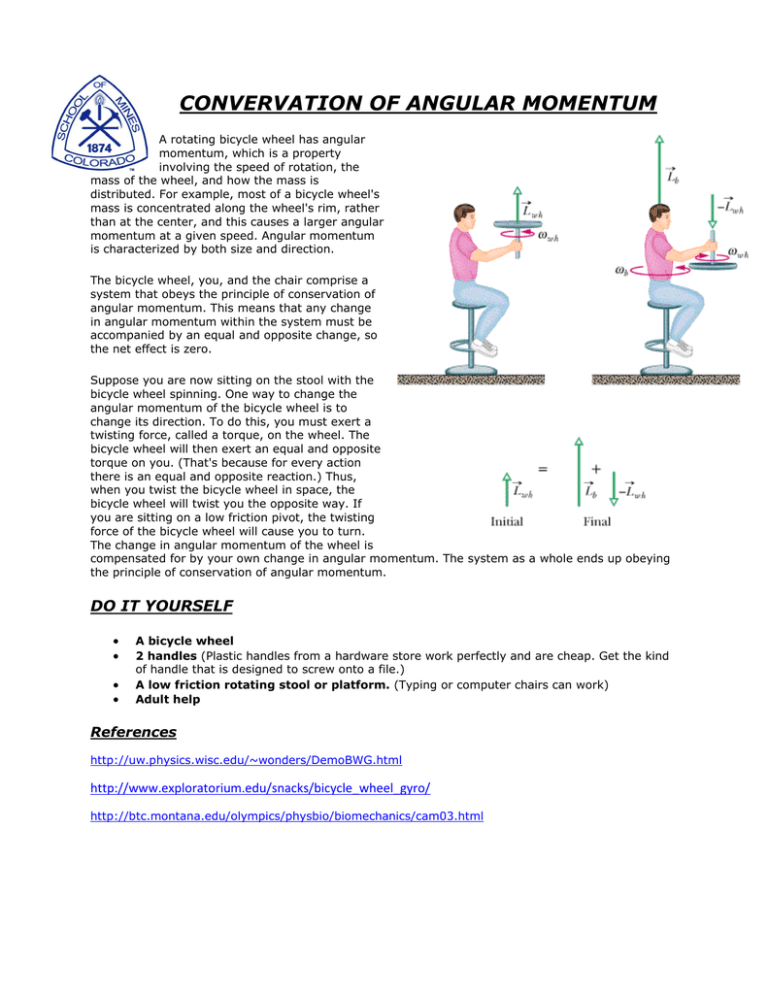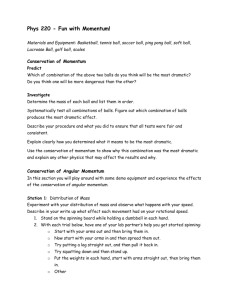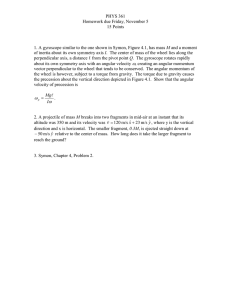Angular Momentum: Bicycle Wheel Experiment Guide
advertisement

CONVERVATION OF ANGULAR MOMENTUM A rotating bicycle wheel has angular momentum, which is a property involving the speed of rotation, the mass of the wheel, and how the mass is distributed. For example, most of a bicycle wheel's mass is concentrated along the wheel's rim, rather than at the center, and this causes a larger angular momentum at a given speed. Angular momentum is characterized by both size and direction. The bicycle wheel, you, and the chair comprise a system that obeys the principle of conservation of angular momentum. This means that any change in angular momentum within the system must be accompanied by an equal and opposite change, so the net effect is zero. Suppose you are now sitting on the stool with the bicycle wheel spinning. One way to change the angular momentum of the bicycle wheel is to change its direction. To do this, you must exert a twisting force, called a torque, on the wheel. The bicycle wheel will then exert an equal and opposite torque on you. (That's because for every action there is an equal and opposite reaction.) Thus, when you twist the bicycle wheel in space, the bicycle wheel will twist you the opposite way. If you are sitting on a low friction pivot, the twisting force of the bicycle wheel will cause you to turn. The change in angular momentum of the wheel is compensated for by your own change in angular momentum. The system as a whole ends up obeying the principle of conservation of angular momentum. DO IT YOURSELF • • • • A bicycle wheel 2 handles (Plastic handles from a hardware store work perfectly and are cheap. Get the kind of handle that is designed to screw onto a file.) A low friction rotating stool or platform. (Typing or computer chairs can work) Adult help References http://uw.physics.wisc.edu/~wonders/DemoBWG.html http://www.exploratorium.edu/snacks/bicycle_wheel_gyro/ http://btc.montana.edu/olympics/physbio/biomechanics/cam03.html



